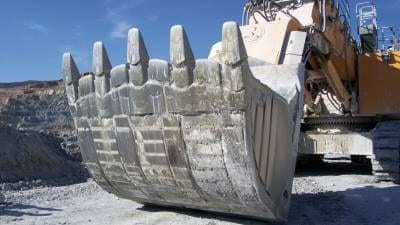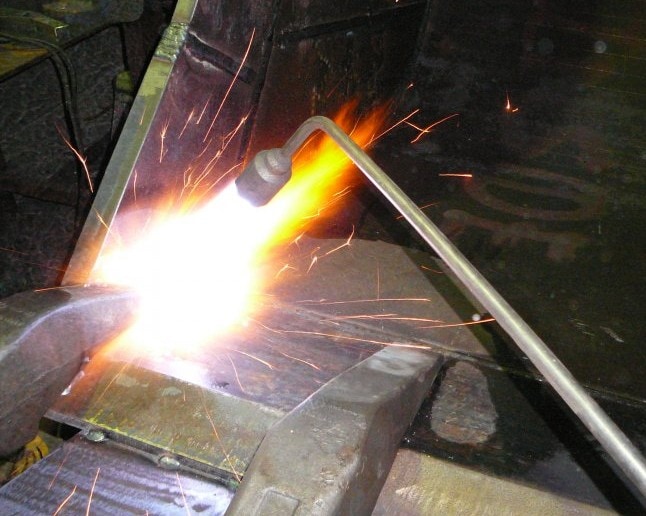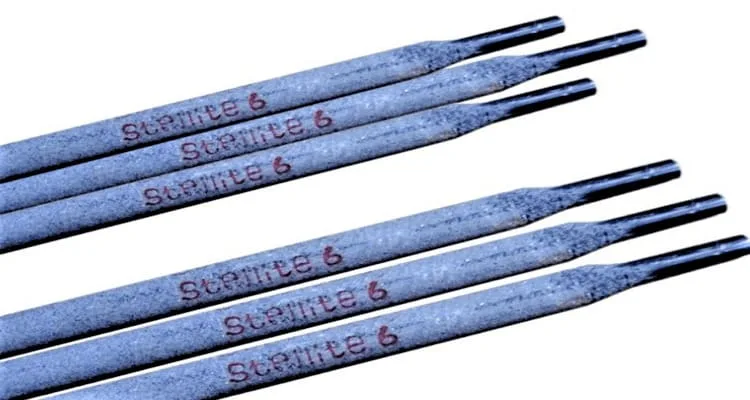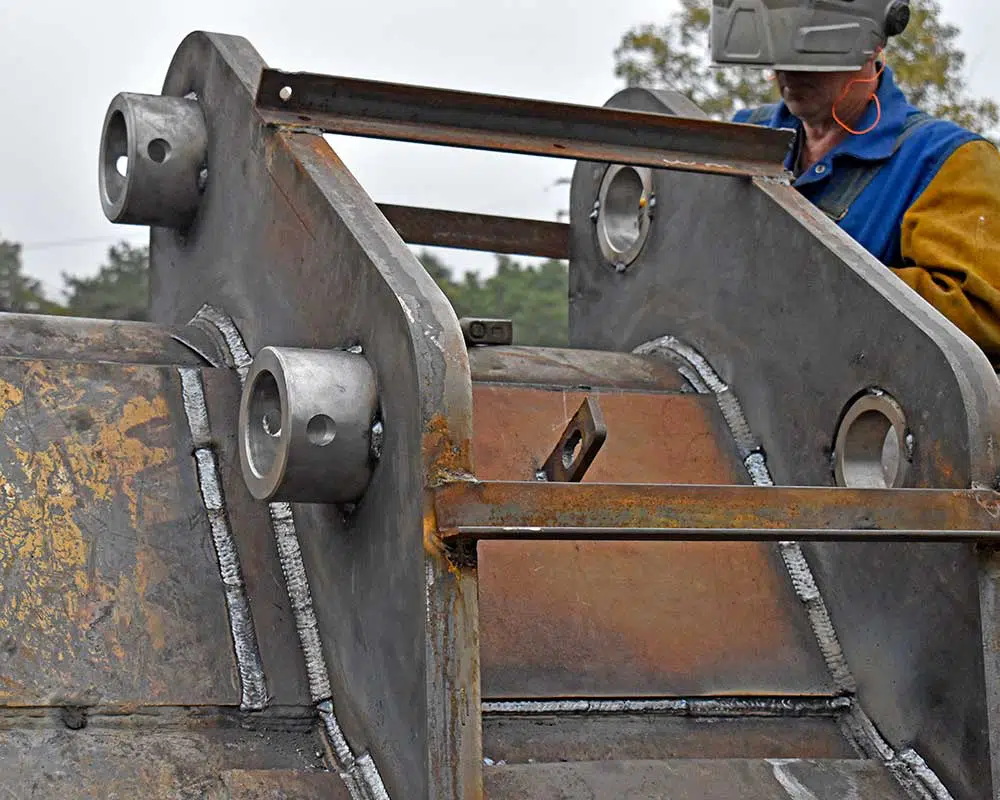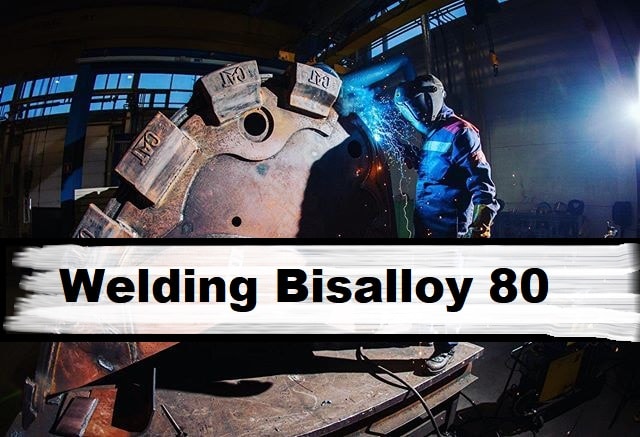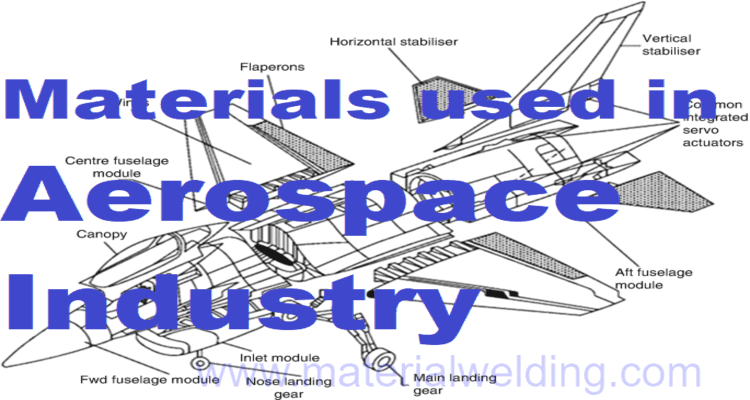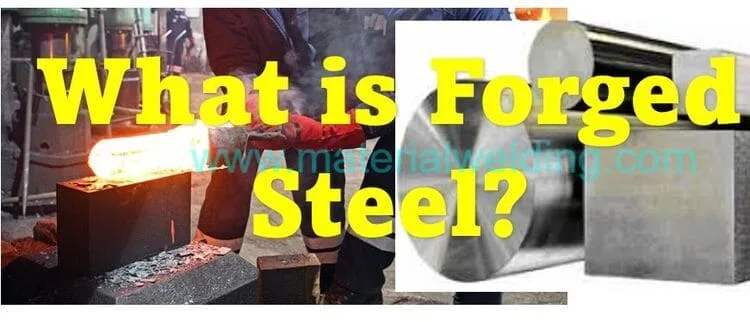AR400 steel is a high-strength, abrasion-resistant steel widely used in applications where resistance to wear and impact is paramount. Welding AR400 steel requires specialized procedures to maintain its mechanical properties while ensuring a strong and durable weld. In this blog post, we will explore the key considerations and best practices for welding AR400 steel.
Understanding AR400 Steel
AR400 steel is a quenched and tempered alloy steel with a nominal hardness of 400 Brinell. It is specifically designed to withstand abrasive conditions, making it ideal for applications such as mining equipment, earthmoving machinery, and wear-resistant components. However, welding AR400 steel requires careful attention to prevent cracking and maintain its abrasion resistance.
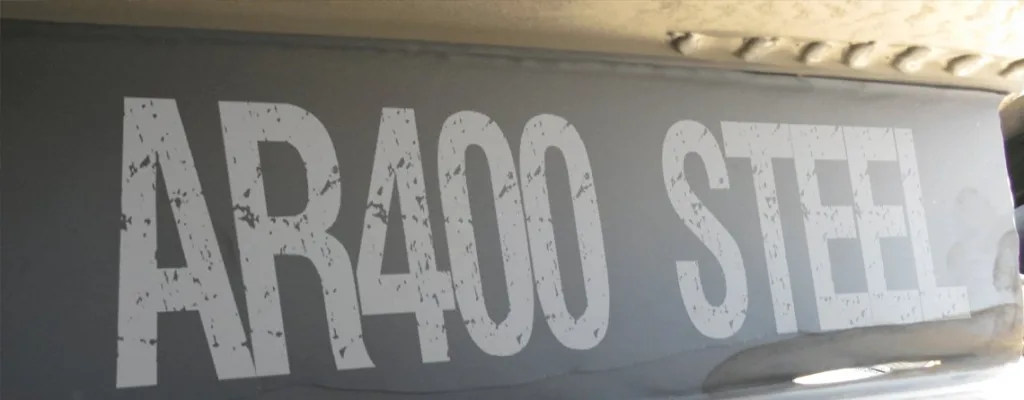
AR400 Steel chemical composition
| Element | Composition Range (Weight %) |
|---|---|
| Carbon (C) | 0.30 – 0.40 |
| Manganese (Mn) | 1.00 – 1.50 |
| Phosphorus (P) | 0.025 max |
| Sulfur (S) | 0.010 max |
| Silicon (Si) | 0.15 – 0.40 |
| Chromium (Cr) | 0.80 – 1.20 |
| Molybdenum (Mo) | 0.15 – 0.30 |
| Nickel (Ni) | 0.50 max |
| Boron (B) | 0.002 – 0.006 |
Preparation and Preheating
Proper preparation is crucial when welding AR400 steel. Follow these steps before welding:
- Clean the surface: Ensure the welding area is clean, removing any dirt, oil, or contaminants that could affect the weld quality.
- Joint design: Use appropriate joint designs, such as butt joints or fillet welds, to ensure sufficient fusion and strength.
- Preheating: Preheating helps reduce the risk of cracking and aids in achieving a sound weld. Preheat temperatures typically range from 200 to 400°F, depending on the thickness and carbon equivalent of the AR400 steel. Refer to the welding procedure specification (WPS) or consult with a welding engineer for specific preheating recommendations.
AR400 Steel Welding Procedure
AR400 steel is a type of steel that has undergone quenching and tempering processes, resulting in high strength and hardenability. However, welding AR400 steel can be challenging due to its characteristics.
During welding, the surrounding base steel near the weld experiences rapid heating and cooling, leading to the formation of a heat-affected zone (HAZ) with increased hardness. Moreover, hydrogen present in the weld metal can diffuse into the HAZ, potentially causing hydrogen embrittlement and delayed cracking outside the weld, particularly in the under-bead or toe areas.
To minimize the risk of cracking in the heat-affected zone, the following measures should be taken:
- Select low hydrogen consumables: Use filler rods with an -H4 or -H2 designation, which indicates a low hydrogen content. Additionally, ensure the appropriate shielding gas is used for the specific consumable and material combination. This helps reduce the introduction of hydrogen into the weld.
- Opt for lower strength filler metals: Choose filler metals such as E7018 or ER70S-2 with the lowest strength that still meet the design requirements. For fillet welds, the weld size can be increased to achieve the specified strength.
- Minimize weld restraint: Given the significant difference in yield strength between the AR400 plate and the filler material, it is crucial to minimize weld restraint. This helps control cracking in the weld.
- Implement preheating: Preheating the material to temperatures between 150°F and 300°F (66°C and 149°C) slows down the cooling rate, reducing the risk of cracking. However, it’s important to note that excessive preheating can anneal the base material. The maximum temperature allowed between passes is 400°F (204°C).
- Employ slow cooling: Allowing the welded part to cool slowly at elevated temperatures provides more time for dissolved hydrogen to escape, reducing the likelihood of hydrogen-induced cracking.
- Peen the weld beads: Peening the weld beads, which involves striking them with a peening tool, helps minimize residual stresses in the weld. This technique can contribute to crack prevention.
Choosing the Right Welding Process and Filler Metal
AR400 steel can be welded using various processes, including shielded metal arc welding (SMAW), gas metal arc welding (GMAW), and flux-cored arc welding (FCAW). Consider the following when selecting the welding process and filler metal:
- Welding process: Each welding process has its advantages and limitations. Consult the WPS or seek expert advice to determine the most suitable process for your application.
- Filler metal selection: Choose a filler metal that matches the strength and hardness of AR400 steel to preserve its mechanical properties. Common filler metals include low-hydrogen electrodes or solid wires with high tensile strength and excellent toughness are:
- E7016
- E7018
- E8018-C1
- ER70S-2
- ER80S-G
AR400 Steel Weldability
Quenched and tempered steels, such as the commonly known T-1 or AR plate, belong to a family of steel alloys. These steels undergo a specific process after being rolled. First, they are quenched by immersing them in water. This quenching step increases their hardness and strength. However, the resulting material often becomes too brittle for practical use. To restore the lost ductility and toughness, the steel is then tempered in a furnace.
It’s important to note that “T-1” and “AR” are not specific steel types but rather trade names. For example, “T-1” encompasses various steels like “Algoma 100,” “N-A-Xtra 100,” and “HY-80.” Similarly, “AR Plate” includes trade names such as “Algoma 500,” “AR500,” and “Hardox.” These trade names are used by steel mills to denote specific variations of quenched and tempered steel.
T-1 steels generally have a yield strength of around 100 ksi. While it is possible to match the strength of these materials when welding, it is often easier to use a filler metal with a lower yield strength, such as 80 ksi. T-1 steels find applications in trailer frames, truck parts, structural members, surface vessels, and submersible vessels due to their strength and durability.
AR Plate, on the other hand, achieves even higher hardness and strength through a higher alloy content. These plates are primarily used for their abrasion and wear resistance properties. The designation “AR400” refers to a plate with a Brinell hardness of 400. A general rule of thumb is that the Brinell hardness divided by 2 provides an approximation of the tensile strength. Therefore, AR400 has an approximate tensile strength of 200 ksi. It’s worth noting that the primary focus of AR plates is on their abrasion and wear resistance rather than their strength.
When welding AR plates, strength matching is not possible or necessary. Therefore, low hydrogen fillers such as E7018 or E8018 are commonly used. In the heavy equipment industry, an 80 ksi filler with 1% nickel, like E8018-C1, is often preferred to ensure low-temperature impact properties when the plate undergoes heavy pounding.
Due to the higher alloy content in these high-strength plates, precautions such as preheating and using low hydrogen processes are necessary. These plates are more susceptible to cracking, and excessive hydrogen content from the welding consumable and inadequate preheating can exacerbate the problem.
It’s crucial to avoid excessive preheating and inter-pass temperatures to prevent softening of the steel, which would compromise its hardness and abrasion properties. Steel manufacturers provide guidelines on maximum inter-pass temperatures and heat input that should be followed before, during, and after welding.
Low hydrogen processes, including GMAW (MIG), submerged arc welding, most gas shielded flux cores, and certain self-shielded flux cores, are considered suitable for welding these materials. However, when using self-shielded flux cores, it’s important to ensure they are qualified for seismic welding to guarantee low hydrogen content.
To determine the hydrogen content of welding consumables, one can refer to the certificate of conformance, a legal document provided by the manufacturers. The document specifies the “diffusible hydrogen” suffix or number, indicated as H16, H8, or H4. A lower number signifies a lower hydrogen content in the weld deposit.
Welding Technique and Control
To ensure a successful weld on AR400 steel, pay attention to the following welding techniques:
- Welding parameters: Optimize parameters such as voltage, current, travel speed, and heat input to achieve proper penetration and fusion while avoiding excessive heat that could lead to distortion and cracking.
- Interpass temperature control: Maintain proper interpass temperature, usually within 300 to 500°F, to prevent the formation of excessive heat-affected zones (HAZ) and maintain the desired mechanical properties.
- Post-weld heat treatment: Consider post-weld heat treatment to relieve residual stresses and enhance the mechanical properties of the welded joints. Consult the steel manufacturer’s recommendations or applicable codes and standards for guidance.
Conclusion
Welding AR400 steel requires a meticulous approach to maintain its high strength and abrasion resistance. By following the appropriate welding procedures, selecting the right welding process and filler metal, and ensuring proper testing and inspection, you can achieve strong and durable welds on AR400 steel.

